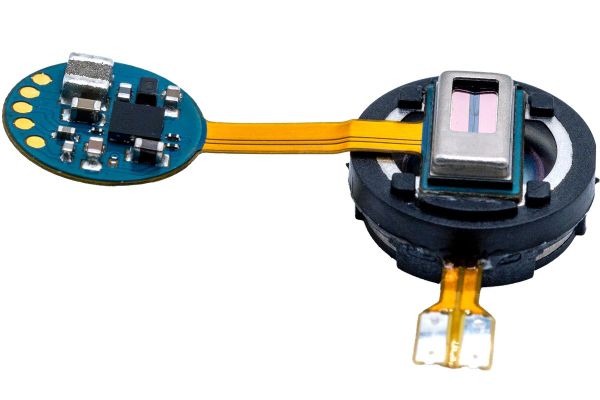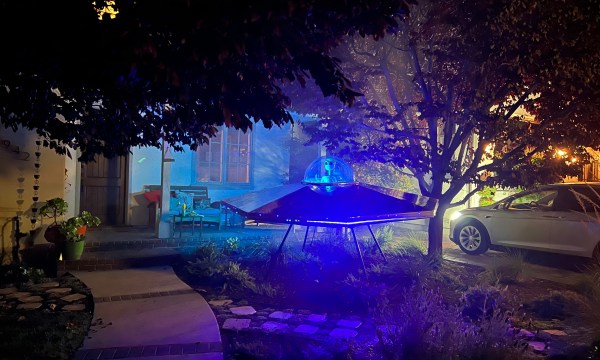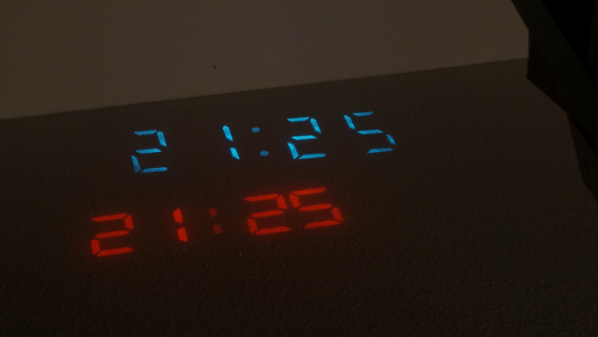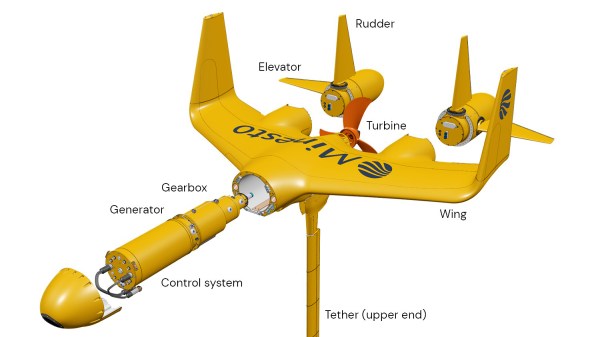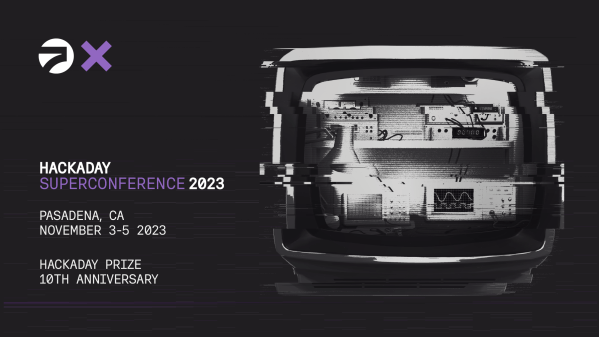Sometimes you read an article headline and you find yourself re-reading it a few times before diving into the article. This was definitely the case for a recent blog post by [The HFT Guy], where the claim was made that the Linux kernel has for fifteen years now been hardlocked into not scheduling for more than 8 cores. Obviously this caused a lot of double-checking and context discovery on both Hacker News and the Level 1 Techs forum. So what is going on exactly? Did the Linux developers make an egregious error more than a decade ago that has crippled Linux performance to this day? Continue reading “The Linux Scheduler And How It Handles More Cores”
Year: 2023
After MEMS Microphones, MEMS Speakers Enter The Market
These days it’s hard to not come across solid-state (micro-electromechanical systems, MEMS) microphones, as they are now displacing electret microphones almost everywhere due to their small size and low cost. Although MEMS speakers are not impossible, creating a miniature speaker that can both displace a lot of air (‘volume’) and accurately reproduce a wide range of frequencies – unlike simple piezo buzzers – is a lot tougher. Here a startup called xMEMS figures that they have at least partially cracked the code with their piezoMEMS speakers, with Creative using the Cowell version in their brand-new Aurvana Ace in-ear monitors. Continue reading “After MEMS Microphones, MEMS Speakers Enter The Market”
Backyard UFO Is Out Of This World
Halloween may be over for another year, but UFOs in your yard are cool year-round. This one might take the cake. [frydom.john]’s excellent UFO is fully programmable and contains about 2000 addressable RGB LEDs, smoke, a laser-lit ramp, and of course, an alien crew.
Under the hood of the wooden frame, you’ll find a Teensy 4.1 running the blinkenlights. There’s also a hacked smoke machine, because what’s a UFO without smoke or fog emanating from underneath? There are six PC fans to blow it around and recycle it, and the ramp runs on a linear actuator.
[frydom.john]’s project notes (PDF), which they refer to as ‘scrappy/hacky’ are also available. We beg to differ a bit on the scrappy/hacky part; it’s 60 pages long and full of photos and diagrams and charts. Even so, it may not be enough for you to replicate this extraterrestrial vehicle, so [frydom.john] is open to questions. Be sure to check this thing out after the break.
Want to have your UFO lift off of the ground? It’s possible with the Coandă effect.
Don’t Look Up, Or You’ll See The Time From This VFD Projection Clock
Ceiling clocks were a bit of a thing back in the days when clock radios were a fixture of nightstands. The idea was to project the time onto the ceiling so you’d only have to roll over onto your back and open your eyes to check the time, instead of potentially disturbing your slumber by craning your neck around to see the front of the clock.
As we recall, what sounded like a good idea was iffy in practice, with low-end optics and either weak incandescent bulbs or blazing LEDs. This nifty VFD projection clock by [Thomas Shupfs] seeks to fix those problems, and from the look of it does a pretty good job. It takes advantage of something else that fell out of favor with consumers — analog photography — by tapping into the ready supply of unwanted lenses. He paired that up with an IVL2-7/5 vacuum fluorescent display inside a 3D printed case with a cone-shaped extension to hold the lens at the right distance above the display. [Thomas] says that the STM32 software only supports JSON-RPC over USB at this time, and includes a couple of Python programs with examples of how to set the time and check the accuracy of the clock.
[Thomas] compares the clock head-to-head against his old LED projection clock, as seen in the featured image above; we flipped it for a better idea of what it would look like from bed. We’ve got to say the soft blue glow of the VFD would be a lot more pleasant to wake up to than the bright red LED projection. But this soft white projection clock is nice too.
Thanks to [skymab] for the tip.
A Brief History Of Weather Control
It used to be a common expression to say that something would happen when “people walked on the moon.” That is, something that was never going to happen. Of course, by 1960, it was clear that someone was going to walk on the moon eventually. There were many other things everyone “knew” would happen in the future. Some of them came true, but many of them didn’t. Some, like video phones and robot factory workers, came true in a way, but not as people imagined. For example, people were confident that computers would easily translate between human languages, something we still have trouble doing entirely reliably. Another standard prediction is that people would control the weather.
Controlling the weather, in some ways, seems even less likely than walking on the moon. After all, we know where the moon is and where it will be. We still don’t understand precisely what causes the weather to behave the way it does. We have models and plenty of scientific theories. But you still can’t know exactly what’s going to happen, where, or when.
History
If you farm or live in a hut, weather is especially important. You want rain but not too much rain. Without scientific knowledge, many cultures had rain-making superstitions like a rain dance or other rituals meant to encourage rain. Some think that loud noises like cannon fire prevent hail. Charlatans would promise rain in exchange for donations.
However, science would eventually surface, and in the 1800’s James Espy — the first U.S. meteorologist — theorized that convection was what really caused rain. He had bold plans to set massive fires to encourage rain but could not convince Congress to go along.
Half a century later, Robert St. George Dyrenforth tested the effect of explosions on rainfall. There is no evidence that his cannon and fireworks did anything. He did, however, claim credit for any rain that happened to occur nearby. There have been many reports that explosions cause rain — rain often falls after a heated battle, apparently. The government in Thailand tried to induce rain using dry ice flakes dropped into clouds with, reportedly, some success. Abu Dhabi, Russia, and China’s governments claim to have working weather control today.
Underwater Kites Buoying The Prospect Of More Tidal Power Generation
Swedish start-up Minesto has been for years trying to float the idea of having underwater turbines that generate power for use on-shore. These would be anchored to the seafloor by a long tether and move around in figure-of-eight patterns like a kite, which would increase the flow over the turbine’s blades. After a few years of trials, its 1.2 MW Dragon 12 kite will now be installed off the coast of the Faroe Islands.
Previously, Minesto had installed its much smaller DG500 (0.5 MW) kite turbine at Holyhead Deep, in Wales, where a single unit has been tested at a depth of between 65 and 91 meters. So far, only this unit has seen continuous operation. As noted in the linked Tethys report, this one unit was not connected to the grid, and research on its environmental impact is still ongoing as of September 2022. The main concerns are how it might affect cetaceans (whales, dolphins, etc.), including potential collisions with these as well as diving birds who might end up diving in the midst of a swarm of kites moving about at fairly high speeds.

Although by itself putting a turbine into the much stronger and energetic ocean currents – not to mention near-continuous – makes sense, the marine environment is a tough one to survive. The DG500 prototype has seen a few years of use, but this would be the first large-scale deployment of such a system and thus the first significant long-term durability test. The goal at the Faroe Islands is to install 120 MW of capacity, across four kite groups, joining the smaller Dragon 4 (0.4 MW) unit that was grid-connected in May of last year.
Depending on the results, including the economics, this technology could prove to be either much better and cheaper than off-shore wind turbines, or turn out to be saddled with fundamental flaws that has plagued previous attempts to make use of the strong currents and tides that make the world’s oceans and seas into one of Nature’s most impressive sights.
A Look At All The Badge Hacks Of Supercon 2023
For those of you who’ve had the opportunity to join us in Pasadena for Supercon, you’ll know it’s a wild ride from start to finish. Singling out a single moment as our favorite is pretty much impossible, but certainly the Sunday Badge Hacking Ceremony has to rank up there. It’s the culmination of ~78 hours of intense hardware and software hacking, and that’s not even counting the pre-show work that attendees often put into their creations. Every year, without fail, this community manages to pull off badge hacks that are beyond anything we could have imagined — and we’re the ones who made the thing in the first place.
Unfortunately, in the mad rush, we’ve never had a chance to actually photograph the hacked badges and share them with the Hackaday readers. This year, at the urging of some of the badge hackers themselves, we were able to throw together a suitable overhead light at the last minute and actually snapped shots of each badge after it was presented to the audience.
The resulting images, sorted by badge hacking category, are below. While some proved difficult to photograph, especially with an impromptu setup, we’re happy to at least have a complete record of this year’s creations. Hopefully we’ll be able to improve on our technique for 2024 and beyond. If yours shows up, or if you’d like to share your appreciation, sound off in the comments below!
Continue reading “A Look At All The Badge Hacks Of Supercon 2023”


